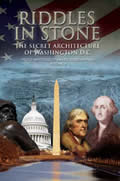PART 2
By
Servando Gonzalez
August 29, 2014
NewsWithViews.com
A characteristic common to all intelligence officers, East and West, is that they have a special open-mindedness. For them nothing is impossible just because it is improbable. —Thomas Powers.
The Bogotazo Riots and the Launching of the Cold War Hoax
Most books and articles about the CIA mention the Agency’s first two successful covert operations: the overthrowing of Premier Mossadegh of Iran in 1953 and the overthrowing of President Arbenz of Guatemala in 1954. Some of them spare a few paragraphs to mention the CIA’s alleged first mistake: its failure to predict the Bogotazo riots. But there is more about the Bogotazo affair than the CIA, Fidel Castro, and his CFR masters want us to know.
On April 9, 1948, Bogotá, the capital of Colombia, was the scene of violent riots, later known as the Bogotazo. The event that apparently unleashed the riots was the assassination of Colombia’s populist leader Jorge Eliécer Gaitán. The events coincided with the celebration in Bogotá of the Ninth International Conference of American States, which had opened its sessions on March 30, 1948, chaired by U.S. Secretary of State and Secret CFR agent General George C. Marshall.
The murder of Gaitán unleashed a frenzied, senseless orgy of killing, burning, and looting that destroyed most of the center of Bogotá and virtually cut it off from the rest of the world for two days. The riots took the lives of more than a thousand people. Before the riot ended 150 buildings had been burned down or severely damaged.
What none of the books about the CIA mention, however, is that the Bogotazo actually was the CIA’s first successful large-scale psychological warfare operation (PSYOP)[1] carried out on behalf of the CFR conspirators. In it they tested new covert warfare, propaganda and mind control techniques later employed in operations ranging from the assassination of President Kennedy to the 9/11, 2001 PSYOP.
Moreover, the Bogotazo operation was the event where the conspirators used for the first time their newly recruited secret agent: Fidel Castro
In early 1948, CIA’s talent spotters at the U.S. Embassy in Havana decided to recruit Fidel Castro as an agent provocateur and send him to Bogotá, Colombia, on a sensitive mission. Apparently Castro’s already impressive record as a gangster, assassin and psychopath convinced them that he was the right person they were looking to perform a delicate and important job.
In a book self-published in 1995,[2] Ramón B. Conte, a man who used to do some minor contract work for the CIA as a heavy,[3] mentions in detail how the Castro’s recruitment took place in early 1948, during a meeting at the mansion of Mario Lazo. Lazo was a U.S.-educated Cuban lawyer who represented most American interests in Cuba. Conte and another CIA operative were on a stakeout in a car parked across the street in front of Lazo’s house. They were armed and ready to intervene if Castro, known for his flaring temper and love for firearms, refused the offer and turned violent.
Castro attended the meeting accompanied by his friend Rafael del Pino Siero, a CIA asset who had been in the U.S. Army during WWII. Among the people who attended the secret meeting were Lazo himself, CIA officer Richard Salvatierra, CIA agent Isabel Siero Pérez,[4] former U.S. ambassador to Cuba Willard Beaulac, and two other Americans. Conte only identified them as Col. Roberts and a CIA officer known as Mr. Davies.
Some years after Conte published his book, I interviewed him over the phone. In the interview he added to the list of people who attended the meeting at Lazo’s home an important name he failed to mention in his book: William D. Pawley.[5]
At the time of the meeting Pawley, a millionaire businessman close friend of President Eisenhower, Allen Dulles, Dean Acheson and Robert Lovett (all of them CFR members) was U.S. ambassador to Peru and Brazil. He had been closely linked to the U.S. intelligence services since the times of the OSS, and was one of the main organizers of the Ninth Inter-American Conference that was planned to take place in April in Bogotá.[6]
According to Conte, a week after the initial meeting, Castro and del Pino met again with CIA’s Salvatierra, who had been assigned the job of Castro’s controller. In this second meeting Castro was assigned the code name Alex and told about his first assignment. It consisted in traveling to Bogotá, Colombia and, acting as an agent provocateur, participate in the assassination of Gaitán, which would be used as a pretext to provoke the riots known as the Bogotazo. The secondary goal of his mission was to plant false clues that would be used later to blame the Communists for the riots. The riots would help Secretary Marshall use the fear of communism as a threat to convince the delegates attending the Conference that the Communist menace was real.[7]
The Bogotazo PSYOP and the Cold War
Most Colombians who have studied the Bogotazo believe that the event was just a violent outburst in Colombia’s national politics. But, as I will show below, they are wrong. The Bogotazo was a typical false flag operation.[8] It was part of a large psychological warfare operation that had nothing to do with Colombia’s internal affairs. Indeed, a secret report about the riots made by Naval Attaché Col. W. F. Hausman, of the U.S. Office of Naval Intelligence, mentions that the riots had been initially planned to occur during the Pan American Conference in Rio de Janeiro in 1947, but the Brazilian police did a good job and dispersed the rioters before they did any harm.[9] The Bogotazo was the event that triggered the beginning of a PSYOP of enormous proportions: the Cold War Hoax.
An important clue to the disinformation techniques used in the Bogotazo operation is the fact that, though the CIA allegedly failed to inform Marshall about the possibility of riots, CFR secret agents in the field kept the Colombian press well informed in advance about that possibility. As Francisco Fandiño Silva, a known Colombian journalist, later recalled, “The American Embassy informed me that it had received reports that a bomb attack was to be made against the General [Marshall].”[10]
Following the same pattern of disinformation, on March 24, Gaitán received a disingenuous warning from Ambassador Beaulac, telling him that the Communists were planning to break up the Conference and that, if they succeeded, Gaitán’s Liberal Party most likely would be blamed for the events.[11]
Just a few hours after the Bogotazo riots erupted, General Marshall, CIA Director Adm. Hillenkoetter, U.S. Ambassador to Colombia Willard Beaulac, Colombia’s President Dr. Mariano Ospina, Secretary of the Presidency Rafael Azula, and other important witnesses concluded that the Bogotazo was a Communist operation instigated by the Soviet Union.
Puzzled by the Agency’s first intelligence “failure,” CIA officer Russell Jack Smith telephoned to a contact in Secretary Marshall’s office in the State Department and asked,
Where did the Secretary get the information that the rioting in Bogotá was a communist plot?” “Oh,” his contact said casually, “he just looked out of the window in his villa six or seven miles away and said, “The communists did it.”[12]
A few days later, on April 13, 1948, the Philadelphia Inquirer published an article under the title “Marshall Blames World Communism for Bogotá Revolt,” providing more elements in an effort to convince the American public that the assassination of Gaitán and the Bogotazo riots had been a work of the Colombian Communists with the support of the Soviet Union. In the days following the Bogotazo events, the CFR-controlled U.S. mainstream media launched a pervasive disinformation campaign to brainwash the American public into believing that the Bogotazo had been a Soviet-Communist operation and must be prepared to face similar events at home.
The Agent Provocateurs
On their way to Colombia, Castro and del Pino stopped first in Panama, where they were introduced to President Enrique Jiménez, where del Pino gave a violent anti-American speech.[13] Argentina’s president Juan Domingo Perón, who acted as a cutout to hide the true source of the money, provided the funds for Castro and Del Pino’s trip. Perón’s pro-Nazi activities have been extensively documented, and he was a personal friend of CFR senior agent Allen Dulles.
Fulfilling their role as agent provocateurs, once in Bogotá, Castro and del Pino openly distributed pro-Communist literature just a few days before the Bogotazo and kept Communist literature in their hotel room.
Some witnesses claim that about 4:00 p.m., just a few hours after Gaitán had been assassinated, they saw a street mob, leaded by Fidel Castro, shouting “A Palacio” [“To the Palace,” meaning the Presidential mansion]. According to the witnesses, Castro was carrying a rifle and boasted that he just had killed two priests. But, if he really said so, he was lying. No priests were killed during the Bogotazo.
In a effort to add credibility to the allegation that Castro was a Soviet agent, William D. Pawley, U.S. Ambassador to Brazil and a Conference delegate, declared to a U.S. Senate investigation that, while he was riding an official Embassy car the day the riots begun, he heard somebody on the radio saying,
This is Fidel Castro from Cuba. This is a Communist revolution. The President has been killed. All the military establishments are now in our hands. The Navy has capitulated to us and this revolution has been a success.[14]
Some authors have used Pawley’s words as the ultimate proof that at that early time Fidel Castro already was a Communist. But, as I mentioned before, this goes against the evidence. In the first place, because, according to Conte, Pawley had attended the meeting at Lazo’s home where the CFR conspirators recruited Castro. Secondly, because ten years later, Pawley played a key role as President Eisenhower’s personal envoy in trying to persuade Cuba’s President Batista to leave the country, thus opening the way for Castro grabbing power in Cuba in 1959.
Planting False Clues
Since their arrival at Bogotá, Castro and del Pino devoted an inordinate amount of time to plant false clues in an effort to implicate the Colombian Communists and the Soviet Union in the coming assassination of Gaitán and the riots.
On April 3, a few days before the opening of the Conference, Colombia’s President, Mariano Ospina and other foreign leaders were attending the evening performance a the Colon Theatre. Suddenly, a shower of leaflets dropped over the attendees. According to a report by one of the Colombian detectives who were present,
“These had been printed in abroad, were definitely Communist in style and revolutionary in phraseology and contrary to the democratic principles of our country, England and the United States.”[15]
With two other detectives, he proceeded to the gallery where he caught the two Cubans in the act of showering “the boxes and orchestra of the Colón Theatre with their revolutionary propaganda.” Detective number 6 took Fidel Castro and del Pino into custody and proceeded to their lodgings —room 33 of the Hotel Claridge. There the two Cubans voluntarily showed the detectives various documents linking him to various Latin American Communist leaders, and various Communist or leftwing books.[16]
According to the Report, the detectives asked for written authorization from their superiors to pick up Castro and del Pino’s passports and summon them to the Bureau of Detectives of the National Police for further interrogation on their Communist activities. Strangely, the permission was denied.[17] It seems that some important people needed Castro and del Pino free to continue doing their job uninterrupted.
Indeed, there are many things pointing to the fact that the Bogotazo riots were not spontaneous, but had been planned way in advance. Probably the most clear was that, a few hours before the assassination of Gaitán took place, the newspaper El Popular, of Barquisimeto, Venezuela, printed on its edition of April 9, 1948 (logically prepared the night before it was printed) the news of the assassination and the riots and released it to the public.[18]
The amazing fact was noticed and mentioned by other publications. A few days later, in April 14, another Venezuelan publication, El Gráfico de Caracas, reproduced a photocopy of the El Popular’s issue with the information. On April 29, a Colombian newspaper, El Siglo of Bogotá, also reproduced El Popular’s information.[19]
It was not a coincidence that the Bogotazo riots erupted while the Ninth Conference was taking place. In 1945, after the end of WWII, the American military-industrial complex and its Wall Street associates were desperately looking for a way to continue producing armaments and saw Latin America as a potential market for their products. They kept active the military bases the U.S. has acquired south of the border with the pretext of the war against the Axis, continued training officers from Latin American countries, and moved to standardize South and Central American military equipment along U.S. lines, in an effort to add the military field to Latin America’s economic dependency to the United States.
CFR conspirators infiltrated in the U.S. government emphasized Latin America’s importance as a safe source of basic materials from a geographic area where foreign powers could not interfere. The plan was to use the Latin American military as their praetorian guard to protect the natural resources that, according to their reasoning, rightly belonged to the CFR conspirators. The first step in that direction was the signing of a military alliance between the United States and the Latin American countries (with the exception of Uruguay, which refused to sign), the Rio Pact of 1947.
Most Latin Americans governments had signed the Pact with the hope that the U.S. would give them the economic help they badly needed — of which corrupt politicians hoped to steal a great part — in return for their political and military cooperation. But, a year later, the economic aid had not materialized, and the politicians were not happy. Now the U.S. had asked then to meet again in Bogotá to sign new treaties.
Cardinal among them was the creation of a new tool for political and economic domination, the Organization of American States (OAS), as well as a commitment to fight the new artificially created enemy: Soviet communism. A secret memorandum dated March 22, 1948, signed by George Kennan (CFR), Director of Political Planning at the State Department, mentions that the problem of Communism must be considered at the Ninth Conference, as well as anticommunist measures that will be prepared and implemented in the interamerican system.[20]
But, given their previous experience, most leaders of the Latin American countries were not eager to help the U.S. to reach its goal. This was evidenced during the first days of the Conference by the delegates’ reluctance to cave in to Marshall’s pressures. Particularly concerning to the delegates was the inclusion of a dangerous loophole in the OAS proposed Charter of Article 15, which stated: “No State or group of States has the right to intervene, directly or indirectly, for any reason whatsoever, in the internal or external affairs of any State.” This principle was supposed to apply not only to armed force, but also to any other form of interference or attempted threat. But the loophole specified that “measures” could be “adopted for the maintenance of peace and security in accordance with existing treaties.”
With the addition of this loophole, the CFR conspirators controlling the U.S. government guaranteed their right to intervene at will in Latin America, and the Latin American delegates were not pleased. But the sight of the angry mobs in the streets, the burning of the buildings, and the indiscriminate killing, proved to be more persuasive than Marshall’s arguments. The last day of the Conference the delegates not only unanimously approved the Charter creating the OAS, but also unanimously approved a document condemning international communism.[21]
After they had approved the creation of the OAS, some of the scared delegates still had the audacity to ask Marshall if there was any possibility of a “Marshall Plan” for Latin America. But, adding insult to outrage, Marshall answered that it was beyond the possibilities of the United States to finance such a plan. The capital required, he added, “must come from private sources.”[22]
The OAS Charter provided the legal mechanism for upholding the Monroe Doctrine. The U.S. controlled the majority in the OAS, including several Latin American votes, and this would guarantee their right to legally militarily intervene in the affairs of the OAS member countries. If the votes did not give the CFR conspirators the legal right to intervene, they reserved the right to do it unilateral just the same.
Most people who have studied the Bogotazo agree that the event that unleashed the riots was the assassination of populist leader Jorge Eliécer Gaitán, head of the Liberal party, by a mentally deranged young man, Juan Roa Sierra.
Just by chance, at the moment Gaitán was assassinated, Castro and del Pino were seated at a café just across the street. Conveniently, a few minutes after the assassination, an angry mob killed the suspect. Some time later is was known that Castro and del Pino had given him the money to buy the gun allegedly used in the assassination.
But just a perfunctory analysis of the Bogotazo events from the point of view of counterintelligence shows that it was a by-the-book false flag operation of the type carried out by the OSS and later the CIA on behalf of their CFR masters. Actually, Roa Sierra was a Manchurian candidate, a psychologically programmed assassin, similar to Lee Harvey Oswald and Sirhan Sirhan. Like in the cases of Oswald and Sirhan, most likely Roa Sierra didn’t shoot the gun.
Actually, the Bogotazo was a key part of a larger psychological warfare operation (PSYOP), whose ultimate goal was to scare the American and Latin American people with the fear of the Communism —an artificially created enemy to substitute the artificially created previous enemy that has just disappeared: Nazism.
The propaganda and sabotage techniques used during the Bogotazo — broadcasting fake reports inciting the rioters, distribution of leaflets implicating the Communists, etc. —, seem to have been carried out following the OSS guidelines for psychological warfare operations as specified by the OSS Morale Operations Branch.[23] The main goal of the OSS Morale Operations Branch was to create unfounded panic, intimidate, demoralize, and spread confusion and distrust among enemy civilians and military forces. A secondary goal was to stimulate feelings of resentment and rebellion among occupied populations. Morale Operations used “black”[24] propaganda, in which the source of the information is disguised.
Adding weight to that suspicion is the fact, ignored by most authors who have studied the Bogotazo, that two weeks before the event the FBI office in Colombia had been dismantled. According to a secret document, all FBI officers (FBI officers worked at the U.S. embassies under the cover of “legal attachés”) were recalled to the U.S. and would not to be replaced.[25]
Before the creation of the CIA, the FBI was the U.S. agency in charge of espionage and counterespionage in Latin America, and it was doing a good job. Despite his personal shortcomings, Hoover was a patriot that always worked for America. Proof of it is that the FBI was one of the few key agencies of the U.S. government the CFR conspirators were unable to penetrate. Therefore, dismantling the FBI office at the U.S. Embassy on Colombia most likely was a precautionary measure to avoid non-controlled, inquisitive minds witnessing an event they would easily have found out was a CIA dirty trick.
Soon after the riots, the Colombian government asked the British Scotland Yard to investigate the events. To this effect, the British authorities sent to Colombia a team of investigators, formed by Chief-Inspector Peter Beveridge, Chief-Inspector Albert Tansil, and Sir Norman Smith, ex-Chief of the British Police in India. Despite some inexactitudes, mostly due to lack of support from the Colombian authorities, poor knowledge of the language and the country, as well as the short time provided for the investigation, the report is a valuable source of information about the Bogotazo and the assassination of Gaitán.
When Dr. Jordán, Chief Investigator of the Colombia’s Justice Minister first met the Scotland Yard investigators, he presented them with a written summary of the salient facts of his investigation as well as his tentative conclusions. According to Jordán, he was in the possession of documentation implicating the Communists in the assassination of Gaitán. But, when Dr. Jordán finally gave the documents to the British, “they proved to consist of two files, of scanty material, without opinion or nothing,” proving little about the Communists’ participation in the events.[26]
Despite Dr. Jordan’s efforts to implicate the Communists in Gaitán assassination, the British investigators categorically stated that, “We are fully convinced that no political party, as such, had any part in the murder.”[27] They reached that conclusion based, on the patent lack of readiness of the political parties, whether Conservative, Liberal, or Communist, to suppress or to take full political advantage of the revolt which flared up after the murder. “We state, therefore, our definitive opinion, that no political Party, can have had any connection with the murder.”[28]
In conclusion, everything indicates that that the riots, which apparently were spontaneously provoked by the assassination of Gaitán, had been planned and prepared in advance, and the assassination was only a cover to hide its true causes. The assassination of Gaitán and the Bogotazo were the result of a carefully planned psychological warfare operation carried out by the CIA on behalf of its CFR masters. This explains why so many known key participants in the Bogotazo were linked to the CFR, the OSS or the CIA. The known ones were:
Gen. George C. Marshall (CFR), U.S. Secretary of State, Chief U.S. delegation to 9th Conference.
Gen. Matthew B. Ridgway (CFR), military advisor to U.S. delegation to 9th Conference
Averell Harriman (CFR), U.S. Secretary of Commerce.
William Wieland, protégé of Sumner Welles (CFR), probably intelligence liaison between CIA and State Dept., later Castro supporter
Roy Rubbotom, U.S. State Department, later Castro supporter
William Pawley, friend of Allen Dulles, links to CIA, attended Lazo meeting.
Willard Beaulac, U.S. ambassador to Colombia, ex-US. Ambassador to Cuba, suspected of attending Lazo meeting.
Norman Armour (CFR, OSS), Assistant Secretary of State, U.S. delegate to 9th Conference.
Richard Salvatierra, CIA officer, attended Lazo meeting.
John Mepples Spiritto, CIA officer, project ARTICHOKE, previously had tried to buy Gaitán.
John C. Wiley (CFR, OSS), former U.S. Ambassador to Colombia.
Robert Lovett (Skull & Bones), U.S. Acting Sec. of State, close links to CFR.
Rafael del Pino Siero, U.S. intelligence asset, attended Lazo meeting
Fidel Castro Ruz, CIA agent, later became an important CFR asset.
Apart from the information I have provided above, the activities during the Bogotazo of so many people linked to the U.S. intelligence services and the CFR is a strong indication that the Bogotazo was not a random outburst of violence but a false flag operation, the key element of a carefully planned and executed major PSYOP called the Cold War —the first of many to be carried out by the CIA and the CFR conspirators in their long battle against the American people and the peoples of the world in the pursuit of their goal of world domination.
The methodology used in this PSYOP followed the Hegelian principle of thesis-antithesis-synthesis,[29] in which the Bogotazo operation was the scaring antithesis used as a threat to force the American and Latin American people into accepting the scaring new synthesis called the Cold War.
|
|
The Bogotazo operation was the pretext used by the CFR conspirators to initiate what is known as “the War Scare of 1948,”[30] a PSYOP that marked the true beginning of the Cold War in the Western Hemisphere. The Cold War proved to be extremely beneficial to CFR’s oil magnates, Wall Street bankers and CEOs of transnational corporations who, as they had done with Nazi Germany, now were making money selling their goods to both parts of the Cold War conflict.
Just a few years later, CFR conspirator Nelson Rockefeller was frantically selling the idea of building nuclear shelters in every American building,[31] and American schoolchildren were hiding under their desks rehearsing for a coming nuclear attack. The time for Americans to live under a permanent state of fear had arrived.
[For a full, detailed analysis of the Bogotazo PsyOp, see my Psychological Warfare and the New World Order: The Secret War Against the American People.]
Click here for part -----> 1,
� 2014 Servando Gonzalez - All Rights Reserved
Footnotes:
1.
Psychological warfare operations (PSYOPs: Operations to convey selected
information to foreign or domestic audiences to influence their emotions,
motives, objective reasoning, and ultimately the behavior of foreign governments,
organizations, groups, and individuals. The purpose of PSYOPs is to induce
or reinforce attitudes and behavior favorable to the originator's objectives.
2.
Ramón B. Conte, Historia oculta de los crímenes de Fidel
Castro (Self-published, n.p., 1995), pp. 15-30.
3.
Heavy, a.k.a. slag. CIA vernacular for assets of girth and muscle the
Agency uses in situations where brute force is more important than wit.
4.
In his book Inside the Company: CIA Diary (New York: Bantam,
1989), CIA defector Philip Agee identifies Isabel Siero Pérez,
del Pino’s aunt, as a CIA’s Miami station agent, p. 396.
5.
You may read a transcript of Conte’s interview (in Spanish) in
my website. There is a link at the end to the interview’s recording.
6.
Information on Pawley in Mario Lazo, Dagger in the Heart: American
Policy Failures in Cuba ( New York: Twin Circle, 1968), pp. 144-145,
170-171.
7.
CFR member George Marshall already had experience in the creation of the
Communist menace: he was instrumental in the implementation of a plan
developed by the CFR conspirators to betray Chiang Kai-Shek was betrayed
and give China in a silver plate to Mao Tse-tung and his “agrarian
reformers.”
8.
False flag operation: an operation designed to be untraceable to the sponsor
due to misrepresentation or disguise. Usually, false clues are planted
to implicate another group or country as the perpetrator of the operation.
9.
Hausman’s Report mentioned in Gonzalo Sánchez, (ed.), Grandes
potencias: El 9 de abril y la violencia (Bogotá: Planeta,
2000), p. 47.
10.
Francisco Fandiño Silva, La Penetración Soviética
en América y el 9 de abril, (Bogotá: Nuevos Tiempos,
1949).
11.
U.S. News & World Report, April 23, 1948, pp. 13-14.
12.
Russell Jack Smith, The Unknown CIA: My Three Decades with the Agency
(Washington, D.C.: Pergamon-Brasseys, 1989), p. 38.
13.
Confidential
Dispatch No. 336, April 26, 1948. Embassy, Havana.
14.
Activities of Wieland, Rubbotom and Castro in Bogotá, Colombia,
in Hearings, Communist Threat to the U.S. Through the Caribbean,
Senate Internal Subcommittee, 86th-87th Congress, Parts 1-12, pp. 725,
756, 806; also in Mario Lazo, Dagger in the Heart (New York:
Twin Circle, 1968), pp. 144-145).
15.
Nathaniel Weyl, Red Star Over Cuba (New York: Hillman/MacFadden,
1960), p. 75.]
16.
Ibid
17.
Ibid
18.
In the same fashion, a TV reporter was giving the news of the collapse
of WTC building 7 while the building was seen standing in the background.
19.
Angel Aparicio Laurencio,
Antecedentes desconocidos del nueve de abril (Madrid: Ediciones
Universal, 1973), p. 39.
20.
Kennan’s memorandum
mentioned in Gonzalo Sánchez, (ed.), Grandes potencias: El
9 de abril y la violencia (Bogotá: Planeta, 2000) p. 50.
21.
See, The Final
Act of Bogotá, Foreign relations of the United States (FRUS),
1948, Volume IX. http://www.icdc.com/~paulwolf/gaitan/finalactofbogota.htm.]]]
22.
Marshall quoted
in Peter H. Smith, Talons of the Eagle: Dynamics of U.S. – Latin
American Relations (New York: Oxford University Press, 1996), p.
148. Nelson Rockefeller (CFR) was the main promoter of using private sources
of capital for Latin American economic “aid.”
23.
See, OSS
Sabotage Instructions, May 7, 1943.
24.
Black: Said of any
operation whose true source is hidden or falsely attributed to another
source. In the case of propaganda, “black” also means that
the content is mostly fake or forged. Black propaganda could be either
true or false. For morale operations purposes, the truth or falsity was
irrelevant. It was the effect on the target’s mind that mattered.
25.
FBI office dismantled, in Secret, No Distribution, Memo
of March 6, 1947.
26.
Sir Norman Smith, Scotland
Yard Report, p. 6.
27.
Ibid., p. 7.
28.
Ibid., p. 8.
29.
German philosopher Georg Wilhelm Friedrich Hegel (1770-1831) made change
the cornerstone of his philosophical system, which he called Dialectics.
According to Hegel, an idea or principle — which he called the thesis—
is challenged by its opposite —the antithesis. Eventually, from
this conflict emerges a new idea or principle, which is a synthesis of
both.
30.
One of the best sources of the War Scare is Frank Kofsky’s, Harry
S. Truman and the War Scare of 1948 (New York: St. Martin’s
Press, 1993).
31.
After a visit to India in 1973, Jawaharlal Nehru told some friends, “Governor
Rockefeller is a very strange man. All he wants to talk about is bomb
shelters.” Nehru quoted in Newsday, December 12, 1973.
Servando Gonzalez, is a Cuban-born American writer, historian, semiologist and intelligence analyst. He has written books, essays and articles on Latin American history, intelligence, espionage, and semiotics. Servando is the author of Historia herética de la revolución fidelista, Observando, The Secret Fidel Castro: Deconstructing the Symbol, The Nuclear Deception: Nikita Khrushchev and the Cuban Missile Crisis and La madre de todas las conspiraciones: Una novela de ideas subversivas, all available at Amazon.com.
He also hosted the documentaries Treason in America: The Council on Foreign Relations and Partners in Treason: The CFR-CIA-Castro Connection, produced by Xzault Media Group of San Leandro, California, both available at the author's site at http://www.servandogonzalez.org.
His book, Psychological Warfare and the New World Order: The Secret War Against the American People is available at Amazon.com. Or download a .pdf copy of the book you can read on your computer, iPad, Nook, Kindle or any other tablet. His book, OBAMANIA: The New Puppet and His Masters, is available at Amazon.com. Servando's book (in Spanish) La CIA, Fidel Castro, el Bogotazo y el Nuevo Orden Mundial, is available at Amazon.com and other bookstores online.
His most recent book, I Dare Call It treason: The Council on Foreign Relations and the Betrayal of the America, just appeared and is available at Amazon.com and other bookstores online.
Servando's two most recent books in digital versions only are The Swastika and the Nazis: A Study of the Misuse of the Swastika by the Nazis and the first issue of the political satire series OBSERVANDO: American Inventors.
Website: www.servandogonzalez.org
E-Mail: servandoglez05(at)yahoo(dot)com



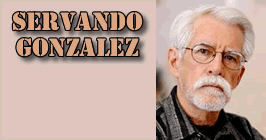

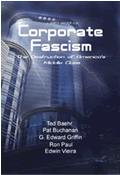
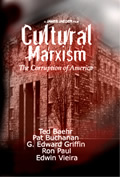
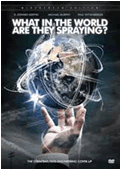
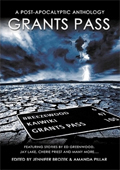





 Share
This Article
Share
This Article
